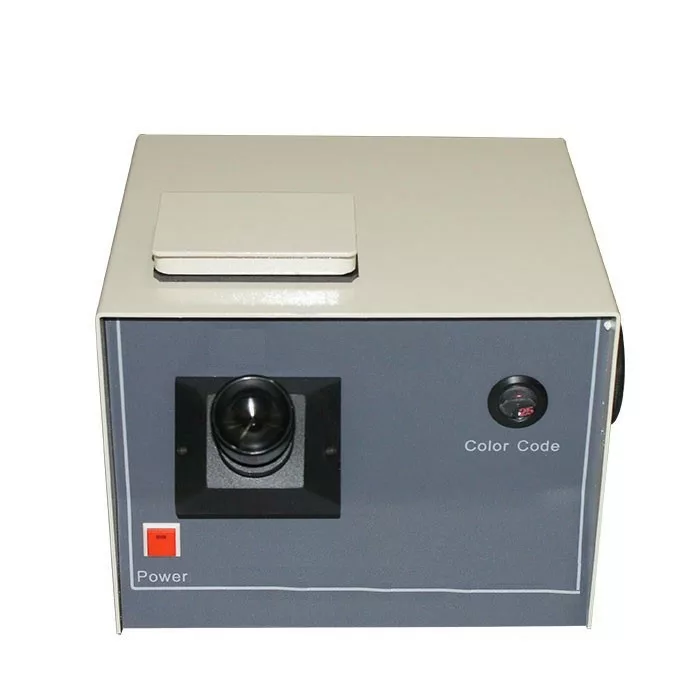The Ultimate Guide to Colorimeters: Understanding, Applications, and Buying Tips
In today’s fast-paced world of quality assurance, research, and manufacturing, precision is key. One indispensable tool in achieving accurate color measurement is the Colorimeter KCM/D/1. Whether you’re working in industries like textiles, food production, or pharmaceuticals, understanding how a colorimeter works and its applications can significantly enhance your operations.
This comprehensive guide dives deep into everything you need to know about colorimeters—from their functionality and benefits to practical tips for selecting the right model. By the end of this article, you’ll have all the information you need to make an informed decision and take your color analysis capabilities to the next level.
What is a Colorimeter?
A colorimeter is a device used to measure the intensity and concentration of colors in a sample by detecting how much light is absorbed or transmitted at specific wavelengths. It operates on the principle of Beer-Lambert Law, which states that the amount of light absorbed by a substance is directly proportional to its concentration.
Unlike spectrophotometers, which analyze the entire spectrum of light, colorimeters focus on three primary wavelengths corresponding to red, green, and blue (RGB). This makes them simpler, more affordable, and ideal for applications where full-spectrum analysis isn’t necessary.
How Does a Colorimeter Work?
- Light Source : A lamp emits light that passes through colored filters.
- Sample Interaction : The filtered light interacts with the sample placed in the device.
- Detector : A photodetector measures the amount of light absorbed or reflected by the sample.
- Data Output : Results are displayed as numerical values representing color intensity or concentration.
Colorimeters are widely regarded for their ease of use and reliability, making them a staple in labs and production facilities worldwide.
Why Use a Colorimeter? Key Benefits
The versatility and efficiency of colorimeters make them a go-to solution for many industries. Here’s why professionals across various fields rely on these instruments:
1. Accuracy
- Provides precise measurements of color intensity and concentration, ensuring consistency in product quality.
2. Affordability
- Compared to spectrophotometers, colorimeters are more budget-friendly without compromising essential functionalities.
3. Compact Design
- Portable models allow for on-the-go testing, ideal for fieldwork or remote locations.
4. Ease of Use
- User-friendly interfaces and straightforward operation make them accessible even to non-experts.
5. Wide Range of Applications
- From food safety to environmental monitoring, colorimeters cater to diverse analytical needs.
These advantages position colorimeters as a practical choice for businesses aiming to streamline processes while maintaining high standards.
Common Applications of Colorimeters
Colorimeters play a critical role in numerous industries, offering solutions tailored to specific challenges. Below are some of their most common uses:
1. Food and Beverage Industry
- Assessing ripeness of fruits and vegetables
- Monitoring color consistency in beverages
- Detecting spoilage or contamination
2. Environmental Science
- Testing water quality by measuring chlorophyll levels
- Analyzing soil composition for agricultural purposes
- Monitoring pollutants in air and water samples
3. Textile Manufacturing
- Ensuring uniform dyeing and colorfastness
- Matching fabric shades during production
4. Pharmaceuticals
- Determining drug concentrations in solutions
- Verifying color stability of medications
5. Cosmetics
- Evaluating pigmentation and formulation consistency
- Quality control for makeup products
6. Education
- Teaching students fundamental concepts of light absorption and color theory
- Conducting hands-on experiments in chemistry classes
With such broad applicability, it’s no wonder that colorimeters have become indispensable tools across multiple sectors.
Factors to Consider When Choosing a Colorimeter
Selecting the right colorimeter depends on your specific requirements and operational constraints. Keep the following factors in mind when evaluating options:
1. Measurement Type
- Decide whether you need transmission-based or reflection-based measurements based on your application.
2. Wavelength Range
- Ensure the device covers the wavelengths relevant to your samples (typically 400–700 nm for visible light).
3. Portability
- If mobility is important, opt for handheld or portable models over benchtop versions.
4. Software Compatibility
- Look for devices with intuitive software that supports data logging and analysis.
5. Durability
- Choose robust designs capable of withstanding frequent use in demanding environments.
6. Budget
- Balance cost with features to find a model that meets your needs without overspending.
Taking these considerations into account will help you invest in a colorimeter that delivers long-term value.
Maintenance Tips for Your Colorimeter
To ensure consistent performance and extend the lifespan of your colorimeter, follow these maintenance practices:
1. Regular Calibration
- Use certified calibration standards to verify accuracy periodically.
2. Clean Components
- Wipe lenses and cuvettes gently to prevent dust or smudges from affecting readings.
3. Avoid Harsh Conditions
- Store the device in a clean, dry environment away from extreme temperatures.
4. Update Firmware
- Install updates provided by the manufacturer to improve functionality and fix bugs.
5. Handle with Care
- Avoid dropping or mishandling the instrument to prevent damage to sensitive components.
Proactive care will minimize downtime and keep your colorimeter functioning optimally.
Frequently Asked Questions About Colorimeters
Here are answers to some commonly asked questions:
Q1: What is the difference between a colorimeter and a spectrophotometer?
- Colorimeter : Measures absorbance at specific wavelengths; simpler and less expensive.
- Spectrophotometer : Analyzes the entire spectrum; offers more detailed insights but costs more.
Q2: Can I measure opaque objects with a colorimeter?
- Yes, reflection-based colorimeters are designed specifically for opaque surfaces.
Q3: Is training required to operate a colorimeter?
- While generally user-friendly, basic training ensures accurate and efficient usage.
Q4: How often should I calibrate my colorimeter?
- Calibration frequency depends on usage but typically ranges from daily to weekly.
Why Invest in a Colorimeter Today?
Investing in a colorimeter is a strategic move for any organization seeking to enhance its analytical capabilities. Its ability to provide quick, reliable, and repeatable results makes it invaluable for maintaining product quality, meeting regulatory standards, and driving innovation. From small startups to large-scale enterprises, a colorimeter empowers teams to achieve excellence in every project.
Elevate Your Operations with the Right Colorimeter
Ready to transform your workflow with a state-of-the-art colorimeter? Our team of experts is here to guide you through the selection process, ensuring you find the perfect match for your needs. Contact us today to explore our wide range of high-performance colorimeters, backed by industry-leading warranties and unparalleled customer support. Take the first step toward precision and efficiency—your success starts here!





Reviews
There are no reviews yet.